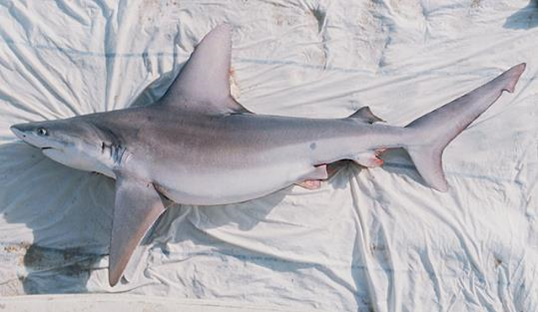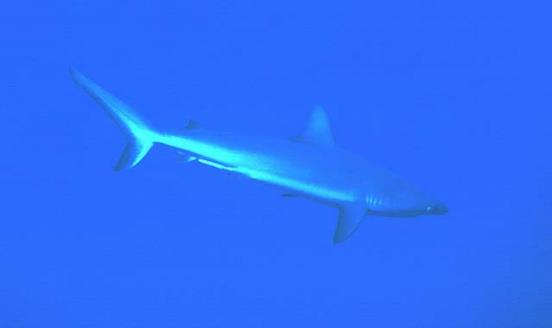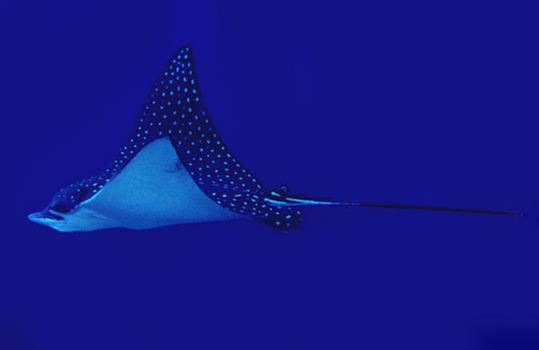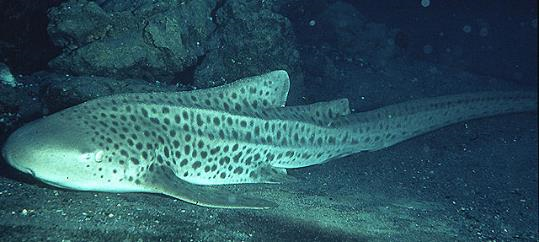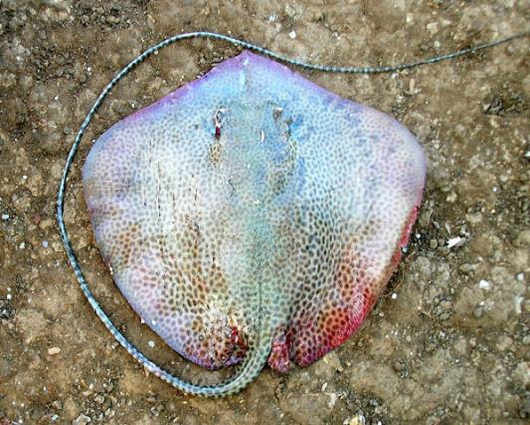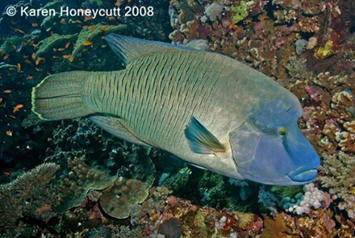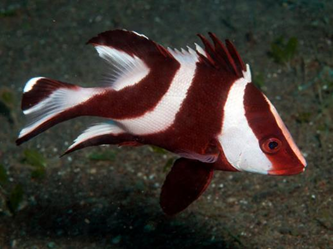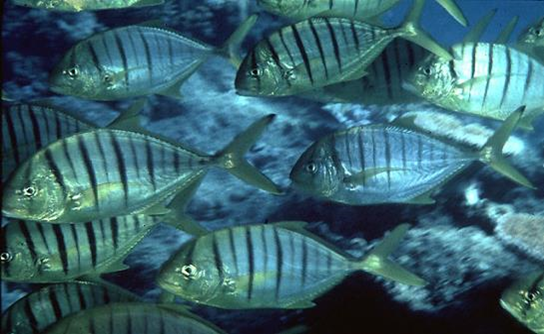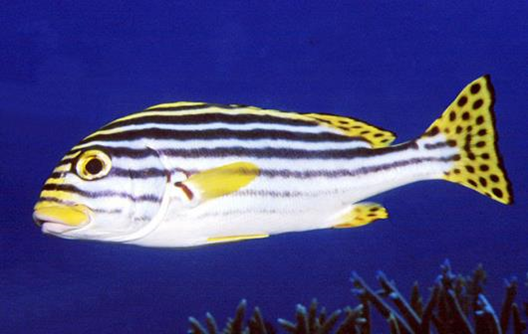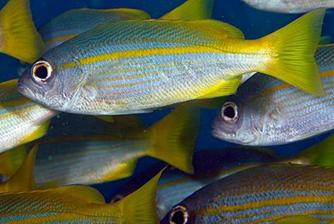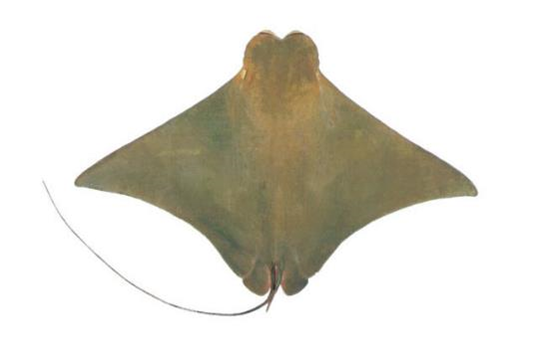Main Tank Zone
NAME : Sandbar Shark
NAME OF THE SPECIE: Sandbar Shark
LOCATION : native to the Atlantic Ocean and the Indo-Pacific.
HABITAT: Is commonly found over muddy or sandy bottoms in shallow coastal waters such as bays, estuaries, harbors, or the mouths of rivers, but it also swims in deeper waters (200 m or more) as well as intertidal zones. Found in tropical to temperate waters worldwide
HABITAT (15-20 words): Inhabit muddy or sandy bottoms in shallow coastal waters like bays, estuaries, harbours and mouths of rivers.
WEIGHT: UPTO 180 CM.
DIET: Not Details
FOOD: The diet of a sandbar shark typically consists of small bony fishes like menhaden, croaker, snapper, mojarras, as well as crustaceans such as crabs and shrimp. Other prey include smaller species of shark like bonnetheads, octopuses, rays, and some species of crustaceans such as shrimp and crab
FOOD & DIET: The sandbar shark preys on fish, rays, and crabs
FACT: Feed on fish, rays and crabs.
NAME : Grey Reef Shark /Blacktail reef shark
NAME OF THE SPECIE: Grey Reef Shark /Blacktail reef shark
LOCATION : The Grey Reef Shark is a widespread species occurring in the central Pacific and westwards to the eastern Indian Ocean.
HABITAT: The species is found in clear tropical waters often from 10 m to more than 50 m around coral reefs, particularly near drop-offs and passes of fringing reefs. It is more common at ancient atolls, and less common at high profile islands with extensive human habitation, or in turbid continental waters.
HABITAT (15-20 words): Inhabit clear tropical waters around coral reefs, especially near drop-offs and passes of fringing reefs.
WEIGHT: Max length : 255 cm Max weight - 33.7 kg Max age - 25 years
DIET: Not Details
FOOD: Grey reef sharks feed mainly on bony fishes, with cephalopods such as squid and octopus being the second-most important food group, and crustaceans such as crabs and lobsters making up the remainder. The larger sharks take a greater proportion of cephalopods.
FOOD & DIET: Feed mainly on bony fishes, cephalopods such as squid and octopus, and crustaceans such as crabs and lobsters.
FACT: Grey reef sharks are active predators and true carnivores (meat-eaters). They hunt and eat different types of fish, crabs and squids. Grey reef sharks have excellent sense of smell. They can smell tuna fish in 10 billionth part of the water. Grey reef shark shows specific behaviour when it is threatened. It swims side to side with arched back, raised head and dropped pectoral fins. Ovoviviparous, Gestation period is of 12 months
NAME : Spotted eagle ray
NAME OF THE SPECIE: Spotted eagle ray
LOCATION : it is found globally in tropical regions, including the Atlantic, Pacific and Indian Oceans.
HABITAT: Coastal and semipelagic over the continental shelf from the surface to 60 m depth.
HABITAT (15-20 words): They are semipelagic and inhabit coastal waters over the continental shelf.
WEIGHT: Max length : 330 cm Max weight - 230 kg Max age - 20 years
DIET: Not Details
FOOD: Spotted eagle ray preys mainly upon bivalves, crabs, whelks, benthic infauna they also feed on mollusks, crustaceans, particularly malacostracans and also upon hermit crabs, shrimp, octopuses, and some small fish Uses its snout to probe in mud for benthic invertebrates
FOOD & DIET: Feed on bivalves, crabs, whelks, benthic infauna, molluscs, hermit craps, shrimp, octopuses and some small fish.
FACT: Their whip like tail can grow two to three times the length of their disc shaped body. They do not have any caudal fin. These fish are sometimes captured as game fish. Ovoviviparous.
NAME : Zebra Shark
NAME OF THE SPECIE: Zebra Shark
LOCATION : The Zebra Shark is found in inshore waters of the continental and insular shelves of the Western Pacific and Indian Oceans.
HABITAT: The Zebra Shark occurs in tropical and subtropical, shallow inshore and offshore waters, often found on and around coral and rocky reefs and on sandy plateaus near coral, at depths down to at least 62 m. They are often observed resting on the bottom as well as swimming near the surface as both juveniles and adults.
HABITAT (15-20 words): Inhabit tropical and subtropical waters around coral and rocky reefs on sandy plateaus.
WEIGHT: Max length : 354 cm Max weight - 120 kg Max age - 30 years
DIET: Not Details
FOOD: Zebra sharks are omnivorous animals but tend to have a more meat-based diet. Zebra sharks feed on small fish, crabs, shrimp, snails and other small invertebrates along with squid and sea snakes which they forage for in the coral reefs.
FOOD & DIET: Feed on small fish, crabs, shrimp, snails and other small invertebrates along with squid and sea snakes
FACT: The long tail of zebra shark allows it to be more agile in the water. This allows them to swim quickly and catch their prey and run from their hunters. The dark color allows them to hide from their prey and predators. As zebra sharks have intense patterns, they are included in the group of carpet sharks, as the patterns on a zebra shark look like the designs of a carpet. They have tail fins on their body that are able to grow as long as their body. Ovoviviparous.
NAME : Honeycomb whipray
NAME OF THE SPECIE: Honeycomb whipray
LOCATION : Bleeker’s Variegated Whipray occurs in the Indo-West Pacific from India to eastern Indonesia.
HABITAT: Demersal on soft substrates inshore
HABITAT (15-20 words): Live on or near the bottom of seas and lakes on soft substrates inshore.
WEIGHT: Max length : 410 cm Max weight -120 kg Max age - 25 tears
DIET: Not Details
FOOD: These rays are bottom feeders for the most part. Their diet consists primarily of small fishes and a variety of invertebrates including crabs, bivalves, worms, shrimps, and sea jellies. They use their pectoral wings to uncover hidden prey.
FOOD & DIET: Feed primarily on small fishes and a variety of invertebrates like crabs, bivalves, worms, shrimps and sea jellies.
FACT: The honeycomb stingray gets its name from its intricate pattern. This pattern helps to camouflage it from sharks and other predators that may try to hunt it from above, as the stingray mostly rests on the sandy bottom of lagoons and shallow waters. Ovoviviparous.
NAME : Humphead Wrasse
NAME OF THE SPECIE: Humphead Wrasse
LOCATION : The Humphead Wrasse is widely distributed on coral reefs and inshore habitats throughout much of the tropical Indo-Pacific, from western Indian Ocean and Red Sea to southern Japan, New Caledonia and into the central Pacific Ocean. In Australia, it occurs on offshore reefs of north-western Australia and the Great Barrier Reef.
HABITAT: Small post-settlement humphead wrasses were found in a species of seagrass, four species of hard coral and soft corals. After settlement, juveniles and adults live associated with reef or near-reef habitats of seagrass beds and mangrove areas, with juveniles typically inshore and the largest individuals found in deeper waters of outer reefs or lagoons
HABITAT (15-20 words): Inhabit hard and soft corals in reef or near-reef habitats of seagrass beds and mangrove areas.
WEIGHT: Max length : 229 cm Max weight -191 kg Max age - 32 years
DIET: Not Details
FOOD: The Humphead Wrasse feeds on mollusks, reef fish, sea urchins, crustaceans, and other invertebrates. They can even eat toxic sea hares, boxfish, and starfish
FOOD & DIET: Feeds on mollusks, reef fish, sea urchins, crustaceans, and other invertebrates.
FACT: This fish is immune to the toxic spines of animals like the crown-of-thorns starfish. Color of the body depends on the species, habitat, age and gender. Wrasse can be white, yellow, orange, red, purple, blue, green, grey, brown or black and covered with numerous bars, stripes and marking
NAME : Emperor Red Snapper
NAME OF THE SPECIE: Emperor Red Snapper
LOCATION : Lutjanus sebae is found in the Western Pacific and Indian Ocean from Australia and New Caledonia to southern Japan and westward to East Africa and the southern Red Sea.
HABITAT: This reef-associated species occurs in the vicinity of coral or rocky reefs, often over adjacent sand flats and gravel patches.
HABITAT (15-20 words): Inhabit coral or rocky reefs over adjacent sand flats and gravel patches.
WEIGHT: 116 cm 32.7 kg 40 Years
DIET: Not Details
FOOD: Carnivore - feeds on fishes, crustaceans such as crabs, stomatopods, shrimps and cephalopod.
FOOD & DIET: Feed on fishes, crustaceans such as crabs, stomatopods, shrimps and cephalopod.
FACT: Juveniles often shelter amongst sea urchin spines until large enough to venture out to feed out in the open.
NAME : Golden Trevally
NAME OF THE SPECIE: Golden Trevally
LOCATION : Gnathanodon speciosus is distributed throughout the Indo-West Pacific from South Africa to the Red Sea eastward to the Hawaiian Islands, the Austral Islands, Marquesas and Easter Island, north to the Ryukyus, south to Australia,. In the Eastern Pacific Ocean, this species ranges from Baja California Sur to northern Peru.
HABITAT: This species is an epipelagic species that occurs inshore and found over rocky reefs, deep lagoons, and seaward reefs.Juveniles often occurs in estuaries.
HABITAT (15-20 words): Inhabit Rocky reefs, deep lagoons and seaward reefs.
WEIGHT: upto 120 cm upto 15 KG
DIET: Not Details
FOOD: They feed on crustaceans, small fish and invertebrates. The larger fish hunt other fish and the smaller fish eat zooplankton.
FOOD & DIET: feed on crustaceans, small fish and invertebrates.
FACT: Juveniles found in the tentacles of jellyfish, but as they grow they display piloting behaviour with much large fish probably to gain protection from their predators.
NAME : Oriental Sweetlips
NAME OF THE SPECIE: Oriental Sweetlips
LOCATION : Oriental Sweetlips are native to the Indian Ocean and the western Pacific Ocean.
HABITAT: This species can be found on both coral and rock reefs at depths from 2 to 25 m.
HABITAT (15-20 words): Inhabit coral and Rocky reefs at depths of up to 25m
WEIGHT: upto 72 cm upto 0.1kg
DIET: Not Details
FOOD: They feed on benthic crustaceans, fish and invertebrates.
FOOD & DIET: Feed on benthic crustaceans, fish and invertebrates
FACT: In some areas of the world 'Grunts' are better known as 'Sweetlips' distinguished from other species by their very large rubbery lips. 'Grunts'because they "grunt," the grunting sound is produced by their flat teeth plates rubbing together and this is amplified by their air bladders.
NAME : Bigeye snapper
NAME OF THE SPECIE: Bigeye snapper
LOCATION : Lutjanus lutjanus is widespread in the Indo-West Pacific from the Solomon Islands to East Africa and from Australia to southern Japan. This species has also been identified from Samoa, Lakshadweep and Tonga and Wallis Island.
HABITAT: This species inhabits offshore coral reefs and trawling grounds.
HABITAT (15-20 words): Inhabit offshore coral reefs and trawling grounds.
WEIGHT: upto 35 cm upto 3kg
DIET: Not Details
FOOD: They are nocturnal predators that mainly feed on fish, but will eat crustaceans, gastropods and cephalopods. Some smaller family members eat zooplankton.
FOOD & DIET: Feed mainly on fish but will eat crustaceans, gastropods and cephalopods.
FACT: Most Snappers live in moderate depths, however there are a few that live much deeper. Juveniles found on inshore reefs.
NAME : Javanese Cownose Ray
NAME OF THE SPECIE: Javanese Cownose Ray
LOCATION : Complete geographic range is not well defined, but the species is widespread throughout the Indo-West Pacific and mostly found in Thailand, Indonesia and Southern China from South Africa to Japan.
HABITAT: Inshore over continental and insular shelves. Recorded over muddy and sandy bottom and shallow estuaries, and in coastal bays.
HABITAT (15-20 words): Inhabit inshore waters ofver continental and insular shelves.
WEIGHT: upto 150 cm upto 5kg
DIET: Not Details
FOOD: Thought to make daily inshore migrations to feed and food includes clams, oysters and crustaceans
FOOD & DIET: Feed on clams, oysters and crustaceans.
FACT: They swim together to stir up the sediment which exposes the clams, oysters and crustaceans which they feed upon.
વૈજ્ઞાનિક નામ : Carcharhinus plumbeus
જાતિનું નામ: Sandbar Shark
સ્થાન: વિગતો નથી
લંબાઈ અને વજન: વિગતો નથી
ખોરાક (વૈકલ્પિક) આહાર : માછલી, રે-ફિશ અને કરચલા ખાય છે.
વિશેષતા: પોતાના કદ અને મોટા ત્રિકોણીય દાંત હોવા છતાં સેંડબાર શાર્ક માછલી ઉપર ક્યારે પણ મનુષ્ય પર હુમલો કરવાનો આરોપ લાગ્યો નથી.
વૈજ્ઞાનિક નામ : Carcharhinus amblyrhynchos
જાતિનું નામ: Grey Reef Shark /Blacktail reef shark
સ્થાન: વિગતો નથી
લંબાઈ અને વજન: વિગતો નથી
ખોરાક (વૈકલ્પિક) આહાર : સીફેલોપોડ જેવા સ્ક્વીડ અને ઓક્ટોપસ,ક્રસ્ટેશિયન્સ જેવાકે કરચલા અને લોબસ્ટર સાથે મુખ્યત્વે હાડકાવાળી માછલીઓ ખાય છે.
વિશેષતા: ગ્રે રીફ શાર્ક સક્રિય શિકારી છે અને તે સુંઘવાની અદભુત ક્ષમતા ધરાવે છે. ટ્યુના માછલીને પાણીના ૧૦ અબજમાં ભાગમાં પણ સુંઘી શકે છે. અને ભયભીત થતાં ખાસ પ્રકારનું વર્તન કરે છે.
વૈજ્ઞાનિક નામ : Aetobatus narinari
જાતિનું નામ: Spotted eagle ray
સ્થાન: વિગતો નથી
લંબાઈ અને વજન: વિગતો નથી
ખોરાક (વૈકલ્પિક) આહાર : તળિયે રહેતા જળચર, બાઇવાલ્વ( ગોકળગાય જેવું પ્રાણી ) કરચલા,વ્હેલ્કસ,મોલસ્ક,હર્મીટ કરચલા,શ્રિમ્પ,ઓક્ટોપસ અને નાની માછલી ખાય છે.
વિશેષતા: સ્પોટેડ ઈગલ રે નેચાબુક જેવી પુંછડી હોય છે જે પોતાના રકાબી જેવા આકારથી ત્રણ ગણી મોટી થઈ શકે છે.
વૈજ્ઞાનિક નામ : Stegostoma fasciatum
જાતિનું નામ: Zebra Shark
સ્થાન: વિગતો નથી
લંબાઈ અને વજન: વિગતો નથી
ખોરાક (વૈકલ્પિક) આહાર : નાની માછલી,કરચલા,ઝીંગા, ગોકળગાય અને બીજા કરોડરજ્જુ વગરના નાના પ્રાણીને ખાય છે.
વિશેષતા: પોતાના શિકારને પકડવા કે શિકારીઓથી બચવા ઝીબ્રા શાર્કની લાંબી પૂંછડી પાણીમાં તેને વધુ સ્ફુર્તિલી બનાવે છે. તેનો ઘાટ્ટો રંગ તેના શિકાર અને શિકારીઓથી બચવામાં મદદ કરે છે.
વૈજ્ઞાનિક નામ : Himantura undulata
જાતિનું નામ: Honeycomb whipray
સ્થાન: વિગતો નથી
લંબાઈ અને વજન: વિગતો નથી
ખોરાક (વૈકલ્પિક) આહાર : સામાન્ય રીતે નાની માછલીઓ ખાય છે તદ્ઉપરાંત કરોડરજ્જુ વિનાના કરચલા, બાઇવાલ્વ( ગોકળગાય જેવું પ્રાણી ) કીડા,ઝીંગા અને સમુદ્રી જેલી ખાય છે.
વિશેષતા: તેના શરીર ઉપરની જટિલ ભાતને કારણે તેનું નામ હનીકોમ્બ સ્ટીગ રે પડ્યું છે. તેની આ ભાત તેને શાર્ક અને અન્ય શિકારીઓથી બચવામાં,છદ્માવરણ કરવામાં મદદ કરે છે.
વૈજ્ઞાનિક નામ : Cheilinus undulatus
જાતિનું નામ: Humphead Wrasse
સ્થાન: વિગતો નથી
લંબાઈ અને વજન: વિગતો નથી
ખોરાક (વૈકલ્પિક) આહાર : મોલસ્ક,રીફફિશ, સમુદ્રી અર્ચિન(ગોળા જેવી કાંટાવાળી છીપમાં રહેતું એક દરિયાઈ પ્રાણી),ક્રસ્ટેશિયન્સ અને બીજા કરોડરજ્જુ વગરના પ્રાણીઓ ખાય છે.
વિશેષતા: તે ઝેરીલા કાંટાઓથી સુરક્ષિત હોય છે, એટલું જ નહીં સી હેર્સ,બોક્સફિશ અને સ્ટારફિશ જેવા ઝેરીલાપ્રાણીઓને ખાઈ શકે છે.
વૈજ્ઞાનિક નામ : Lutjanus sebae
જાતિનું નામ: Emperor Red Snapper
સ્થાન: વિગતો નથી
લંબાઈ અને વજન: વિગતો નથી
ખોરાક (વૈકલ્પિક) આહાર : માછલીઓ,કરચલા,સ્ટોમેટોપોડ, ઝીંગા અને ક્રસ્ટેશિયન્સ જેવા કરોડરજ્જુ વિનાના પ્રાણીઓને ખાય છે.
વિશેષતા: તરુણ અવસ્થામાં એમ્પરર રેડ સ્નેપર, મોટા થઈને બહાર નીકળીને પોતાનો ખોરાક ન લઈ શકે ત્યાં સુધી, દરિયાઈ અર્ચિનના કાંટાવાળા ભાગમાં આશ્રય લે છે. (અર્ચિન-ગોળા જેવી કાંટાવાળી છીપમાં રહેતુ એક દરિયાઈ પ્રાણી)
વૈજ્ઞાનિક નામ : Gnathanodon speciosus
જાતિનું નામ: Golden Trevally
સ્થાન: વિગતો નથી
લંબાઈ અને વજન: વિગતો નથી
ખોરાક (વૈકલ્પિક) આહાર : ક્રસ્ટેશિયન્સ, નાની માછલી અને કરોડરજ્જુ વિનાના પ્રાણીઓ ખાય છે.
વિશેષતા: તરુણ ગોલ્ડન ટ્રેવેલી માછલી જેલી ફિશ ના ટેન્ટેકલ (સૂંઢ જેવા અવયવ) માં જોવા મળે છે, પરંતુ જેમ-જેમ તે મોટી થાય છે તેમ-તેમ તે મોટી માછલીઓ સાથે પોતાના તરવાના કરતબ બતાવે છે.
વૈજ્ઞાનિક નામ : Plectorhinchus Vittatus
જાતિનું નામ: Oriental Sweetlips
સ્થાન: વિગતો નથી
લંબાઈ અને વજન: વિગતો નથી
ખોરાક (વૈકલ્પિક) આહાર : તળિયાના ક્રસ્ટેશિયન્સ,માછલીઓ અને કરોડરજ્જુ વિનાના પ્રાણીઓ ખાય છે.
વિશેષતા: તેમને ગ્રંટ્સ પણ કહેવામાં આવે છે, કારણ કે તેઓ તેમના સપાટ દાંતની પ્લેટોને ઘસીને અવાજ ઉત્પન્ન કરે છે અને વાતાશય થકી અવાજ ની માત્રા માં વધારો કરે છે.
વૈજ્ઞાનિક નામ : Lutjanus lutjanus
જાતિનું નામ: Bigeye snapper
સ્થાન: વિગતો નથી
લંબાઈ અને વજન: વિગતો નથી
ખોરાક (વૈકલ્પિક) આહાર : મુખ્યત્વે માછલી ખાય છે, પરંતુ ક્રસ્ટેશિયન્સ ,ગેસ્ટ્રોપોડ, અને સિફેલોપોડ પણ ખાય છે.
વિશેષતા: જો કે મોટા ભાગની સ્નેપર માછલીઓ મધ્યમ ઊંડાઈમાં રહે છે, પરંતુ તેમાંથી કેટલીક, તરુણ માછલીઓ સાથે દરિયાઈ પરવાળાના ખડકો પાસે વધુ ઊંડે રહે છે.
વૈજ્ઞાનિક નામ : Rhinoptera javanica
જાતિનું નામ: Javanese Cownose Ray
સ્થાન: વિગતો નથી
લંબાઈ અને વજન: વિગતો નથી
ખોરાક (વૈકલ્પિક) આહાર : કલેમ, ઓઈસ્ટર્સ અને ક્રસ્ટેશિયન્સ ખાય છે.
વિશેષતા: કલેમ, ઓઈસ્ટર્સ અને ક્રસ્ટેશિયન્સ ને સમુદ્રી કાંપ માં થી ખોતરી કાઢવા અને ખાવા માટે બધી ભેગી એક સાથે તરે છે.
वैज्ञानिक नाम : Carcharhinus plumbeus
जाति का नाम : Sandbar Shark
जगह: कोई विवरण नहीं
लंबाई और वजन: कोई विवरण नहीं
खाना: कोई विवरण नहीं
भोजन (वैकल्पिक) आहार: मछलियाँ, रे और केकड़े खाती हैं।
विशेषता: अपने आकार और बड़े एवं तिकोने दाँत के बावजूद सैंडबारशार्क पर कभी भी मनुष्यों पर हमले का आरोप नहीं लगा।
वैज्ञानिक नाम : Carcharhinus amblyrhynchos
जाति का नाम : Grey Reef Shark /Blacktail reef shark
जगह: कोई विवरण नहीं
लंबाई और वजन: कोई विवरण नहीं
खाना: कोई विवरण नहीं
भोजन (वैकल्पिक) आहार: ये मुख्य रूप से पुष्ट मछलियाँ, स्क्विड और ऑक्टोपस जैसे कपालपाद तथा केकड़े और झींगा मछली जैसे क्रस्टेशियस खाती हैं।
विशेषता: ग्रे रीफ शार्क सक्रिय शिकारी है और इसके पास सूँघने की उत्कृष्ट क्षमता होती है। ये ट्यूना फिश को पानी के १० अरबवें भाग में भी सूँघ लेती हैं और भय की स्थिति में विशिष्ट व्यवहार दिखाती हैं।
वैज्ञानिक नाम : Aetobatus narinari
जाति का नाम : Spotted eagle ray
जगह: कोई विवरण नहीं
लंबाई और वजन: कोई विवरण नहीं
खाना: कोई विवरण नहीं
भोजन (वैकल्पिक) आहार: दो कपाट वाली सीपियाँ, केकड़े, नितलस्थ जंतुओं, हर्मिट क्रैब, झींगे, ऑक्टोपस और कुछ छोटी मछलियों को खाती हैं।
विशेषता: स्पॉटेड ईगल रेय के पास चाबुक जैसी पूँछ होती है जो उनके डिस्क आकार वाले शरीर से दो से तीन गुने आकार तक बढ़ सकती हैं।
वैज्ञानिक नाम : Stegostoma fasciatum
जाति का नाम : Zebra Shark
जगह: कोई विवरण नहीं
लंबाई और वजन: कोई विवरण नहीं
खाना: कोई विवरण नहीं
भोजन (वैकल्पिक) आहार: छोटी मछलियों, केकड़ों, घोंघों और अन्य छोटे अकशेरुकीय प्राणियों के साथ-साथ कृत्रिम चारा और समुद्री साँप भी खा जाती हैं।
विशेषता: ज़ेब्राशार्क की लंबी पूँछ उसको पानी में ज्यादा ही चुस्त बना देती है। जो उन्हें तेजी से तैरने और अपना शिकार पकड़ने या अपने शिकारियों से बचाव करने में सक्षम बनाती है। उसके गहरे रंग से उन्हें अपने शिकार और शिकारियों दोनों ही से छिपने में मदद मिलती है।
वैज्ञानिक नाम : Himantura undulata
जाति का नाम : Honeycomb whipray
जगह: कोई विवरण नहीं
लंबाई और वजन: कोई विवरण नहीं
खाना: कोई विवरण नहीं
भोजन (वैकल्पिक) आहार: प्राथमिक रूप से छोटी मछलियों को खाती है। इसके अलावा केकड़े, दो कपाट वाली सीपियाँ, कीड़े, झींगे और समुद्री जेली आदि कई तरह के अकशेरुकीय प्राणियों को खा लेती है।
विशेषता: हनीकॉम्ब व्हीप रे का यह नाम उसके शरीर पर बने जटिल पैटर्न के कारण पड़ा। यह पैटर्न उसे शार्क और अन्य शिकारियों से बचाने में छलावरण का काम करता है।
वैज्ञानिक नाम : Cheilinus undulatus
जाति का नाम : Humphead Wrasse
जगह: कोई विवरण नहीं
लंबाई और वजन: कोई विवरण नहीं
खाना: कोई विवरण नहीं
भोजन (वैकल्पिक) आहार: सीपियाँ, रीफ फिश, समुद्री अर्चिन, परुषकवची और अन्य अकशेरुकीय प्राणियों को आहार बनाती हैं।
विशेषता: ये जहरीले काँटों के वार से सुरक्षित होती हैं और यहाँ तक कि सी हेयर, बॉक्सफिश और स्टारफिश जैसे जहरीले जंतुओं को भी खा सकती हैं।
वैज्ञानिक नाम : Lutjanus sebae
जाति का नाम : Emperor Red Snapper
जगह: कोई विवरण नहीं
लंबाई और वजन: कोई विवरण नहीं
खाना: कोई विवरण नहीं
भोजन (वैकल्पिक) आहार: ये मछलियों और केकड़े, रंध्रपाद, झींगे और कपालपाद जैसे परुषकवचियों को खाती हैं।
विशेषता: अवयस्क एंपरर रेड स्नैपर अकसर समुद्री अर्चिन स्पाइंस के बीच तब तक शरण लेती है, जब तक कि वह बाहर निकल कर खुले में अपना आहार जुटाने के लायक नहीं हो जाती।
वैज्ञानिक नाम : Gnathanodon speciosus
जाति का नाम : Golden Trevally
जगह: कोई विवरण नहीं
लंबाई और वजन: कोई विवरण नहीं
खाना: कोई विवरण नहीं
भोजन (वैकल्पिक) आहार: ये परुषकवची, छोटी मछलियाँ और अकशेरुकीय प्राणियों को खाती हैं।
विशेषता: अवयस्क गोल्डेन ट्रेवली जेलीफिश के शिकंजे में पाई जाती है लेकिन जैसे-जैसे ये बड़ी होती जाती है बड़ी मछलियों के साथ अपनी तैराकी का हुनर दिखाने लगती हैं।
वैज्ञानिक नाम : Plectorhinchus Vittatus
जाति का नाम : Oriental Sweetlips
जगह: कोई विवरण नहीं
लंबाई और वजन: कोई विवरण नहीं
खाना: कोई विवरण नहीं
भोजन (वैकल्पिक) आहार: तलहटी के क्रस्टेशियस, मछलियों और अकशेरुकीय प्राणियों को अपना आहार बनाती हैं।
विशेषता: इन्हे ग्रंट्स' भी कहा जाता हैं, क्योंकि वे अपने सपाट दांतों की प्लेटों को रगड़कर ध्वनि उत्पन्न करती हैं और ध्वनि उनके वाताशय द्वारा प्रवर्धित होती है।
वैज्ञानिक नाम : Lutjanus lutjanus
जाति का नाम : Bigeye snapper
जगह: कोई विवरण नहीं
लंबाई और वजन: कोई विवरण नहीं
खाना: कोई विवरण नहीं
भोजन (वैकल्पिक) आहार: मुख्यतः तो यह मछलियों को ही आहार बनाती है, लेकिन परुषकवची, उदरपाद एवं कपालपाद भी खा लेती है।
विशेषता: यद्यपि अधिकतर स्नैपर मध्यम गहराई में रहती हैं, लेकिन कुछ ऐसी भी हैं जो बच्चों के साथ तटवर्ती शैलभित्तियों में बहुत गहराई वाले पानी में चली जाती हैं।
वैज्ञानिक नाम : Rhinoptera javanica
जाति का नाम : Javanese Cownose Ray
जगह: कोई विवरण नहीं
लंबाई और वजन: कोई विवरण नहीं
खाना: कोई विवरण नहीं
भोजन (वैकल्पिक) आहार: बड़ी सीपियाँ, घोंघे और अन्य परुषकवची इसके आहार बनते हैं।
विशेषता: ये तलछट को खुरेदने के लिये साथ- साथ तैरती हैं, जिससे बड़ी सीपियाँ, घोंघे और अन्य परुषकवची सामने आ जाते हैं और उन्हीं को ये खाती हैं।






